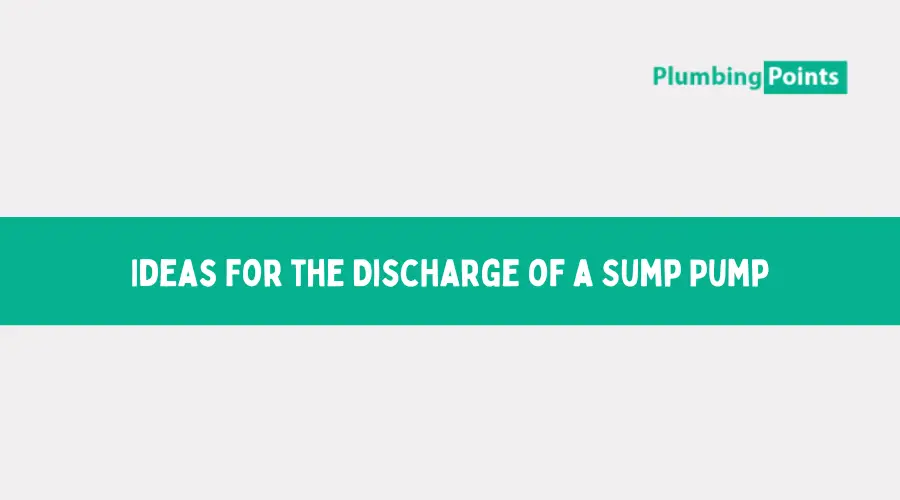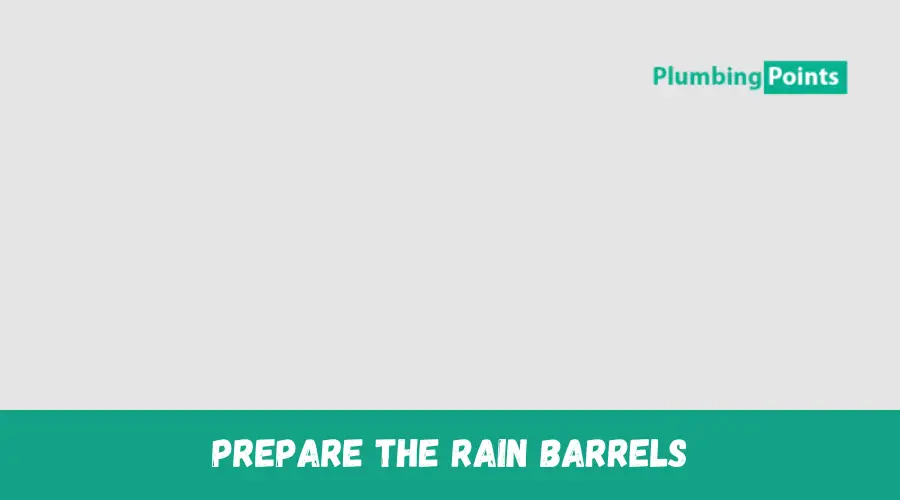Last Updated on January 8, 2023 by admin
Many of us rely on our sump pumps to ensure that our houses are habitable and safe. The purpose of a sump pump is to remove water from the basement and discharge it to an appropriate location away from the house.
More and more people are starting to think about the impact their daily actions have on the environment, and this has led some households to ask whether there are more efficient methods to handle this waste. Considerable sump pump discharge ideas are discussed here.
Table Of Contents
Ideas for the Discharge of a Sump Pump
The sump pump’s effluent must be directed someplace. It’s possible to direct it to the appropriate drains, and this works effectively in many cases, but it’s not always the best approach. For this regard, we often hunt for other strategies for discharging the sump pump, either because of the negative impact it has on the surrounding environment or the subpar grade of the water it removes from the basements.

Set up a Rain Garden
A rain garden is a shallow hole in the ground that is used to collect and slowly release water from rain and other sources of drainage. Plants and flowers that are native to the region will thrive best there.
Design your garden such that it is downstream from your sump pump and at minimum 10 feet away from your home’s structure. Drill a hole, fill it up with water, then look at the water level to determine the optimal location. A rain garden would be ideal if the water disappears within 24 hours.
Create a shallow, descending channel from your pump’s outlet to your garden. Put a PVC pipe through the channel from your house to the garden. The next step is to create a bowl-shaped pit in the garden’s designated location.
The steeper the slope, the bigger the hole must be. Elevate the banks around the opening to prevent water from spilling out. Plants should be placed in carefully selected areas, and the remaining space should be covered with drainage stones.
Plant native species in the prepared soil in your garden. Water is conserved and maintenance is reduced when local flora is used. In addition, they serve as a magnet for winged creatures that are good for the environment.
Prepare the Rain Barrels
Huge plastic buckets, called rain barrels, are used to collect rainwater for later use. Besides catching rainwater, they may also store the water that is released from a sump pump. If you use a rain bucket, you may reduce your use of municipal water and hence your water cost.
For no cost at all, you may water your grass, plants, and trees by collecting rainwater in barrels. It is a great way to save money on your water bill if you use sprinklers to irrigate your grass.

If you need something that can be easily connected to a garden hose, a 50-gallon bucket with a spigot on the end is an excellent choice. Pick a bucket that already has a cutout at the top for the pipe, or make one yourself. Before placing the bucket, make sure the area is flat. Raise the container up at minimum of twelve inches so you can reach the vent.
Then, figure out how far the pipe must extend in order to connect the container to the sump pump outlet. Remove a section of the pipe and attach it to the drain. Put the pipe’s opposite end into the rain barrel’s opening. A series of rain barrels may be linked together with additional pipes or lines.
Construct Dry Well
The construction of a dry well is another step toward preventing issues associated with the sump pump’s outflow. The primary function of a dry well is to divert water underground and spread it out, eliminating the potential for surface problems like potholes.
You may compare it to French drainage, but this one uses a different method. It’s not really a pipe system, but more of a barrel to store water in until it’s poured out.
It’s important to place a dry well on a downward-sloping surface, away from the sump pump. This is done so that any water that does get into the sump pump doesn’t have a chance to flow back into the dry well. In addition, there has to be some space between the well and the house (approximately 12 feet).
A dry well will prevent groundwater from seeping into our lower levels. To get it set up, you’ll need to put in a lot of time and effort.
Prevent Delivering Water to Such Locations
From the discharge of your sump pump, the water flows via a pipeline and into a weather- and pressure-resistant flexible tube. Since the first dangerous spot to discharge water is too near to your home’s structure, it’s best to move the end of this pipe as far away from the structure as feasible.
Drainage points must be at minimum 10 feet, and preferably 20 feet, from your home’s base. If you don’t, the water will seep back into the ground, and you’ll have to run the pump again to extract it. A steady stream of water may cause erosion, weaken your structure, and shorten the lifespan of your sump pump.
If you possess a septic tank system, you should also keep the water pump far away from it. Please keep in mind that emptying water into a sewage system might lead to floods. Some local laws prohibit it since it is seen as a pollutant.
Your neighbor’s yard is the very last place you want to go. There are several areas where it is illegal as well as against basic politeness. It’s possible that you might be held responsible for damages caused by water overflow.
FAQ’s
1. What can I do with sump pump discharge?
Keep your home safe with a professional sump pump installation. This effective solution can help protect against leaks and flooding by directing discharge water away from the house to an area where it won’t cause any damage – all while keeping it out of sewer or septic systems. A knowledgeable installer will work with you to find the best spot for this crucial step, ensuring maximum efficiency in every situation.
2. Where should my sump pump drain to?
Keep your home safe and dry by making sure that sump pump drainage stays away from driveways, sidewalks or other paved surfaces. For added protection against water damage, only run clear clean water – such as ground/rainwater or air conditioner condensate- through the system.
3. Can you drain sump pump into sink?
Though it might appear to be a quick fix, attaching your sump pump’s discharge pipe directly to a sink or floor drain isn’t just frowned upon-it could land you in trouble with local authorities. Make sure that whatever solution you go for is compliant and approved.
4. Is it OK to drain hot water tank into sump pump?
To keep your hot water tank in working order, plumbing experts suggest a periodic draining. This can be achieved with the help of your primary sump pump; simply attach its hose to the drain at the bottom and let it do all the work. Doing so helps remove any sediment that might have built up over time – keeping everything running smoothly.
Conclusion Sump Pump Discharge Ideas
The sump pump is an inexpensive and straightforward fixture in our home that prevents water damage to the basement. The sump bowl will collect any moisture that may otherwise seep into the foundation of our home, and then pump it out.
